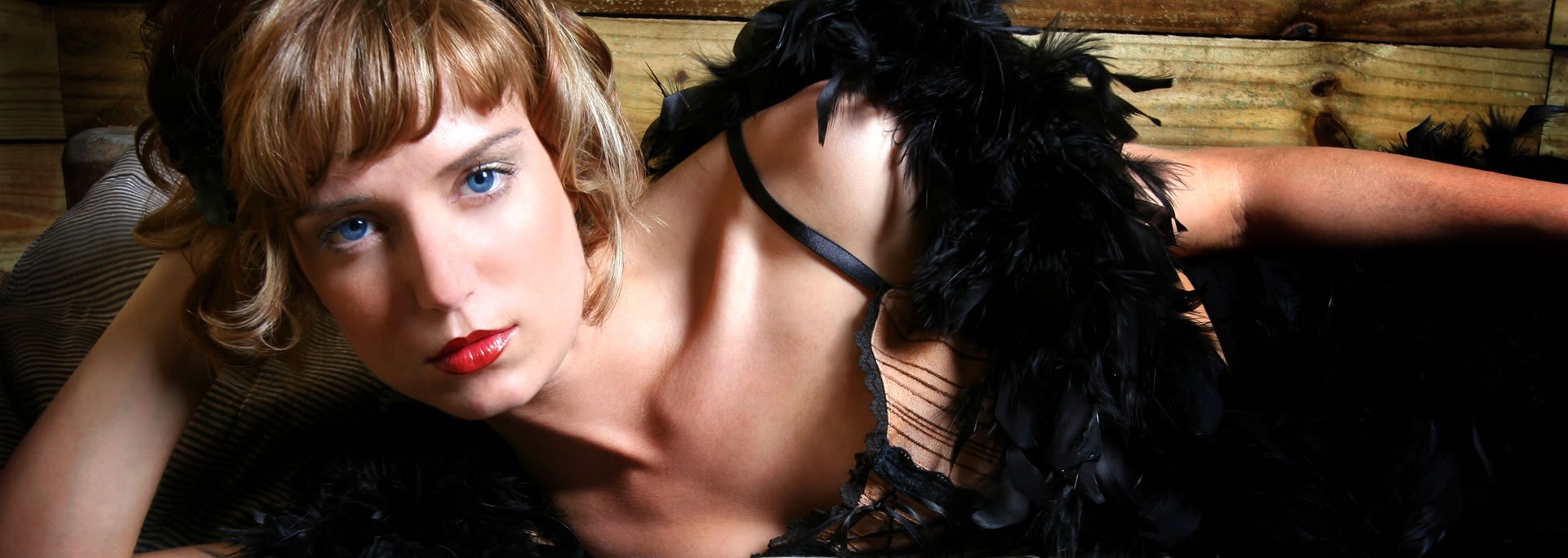
New Orleans’ relationship with crime and vice started early on in the city’s history.
As in, almost from the very start. Some historians would attribute the city’s “sinful” ways to the fact that many of the colonists were criminals themselves, snatched from the streets of France and thrown onto a ship sailing for Nouvelle Orleans. They were greeted by the French expeditioners, the wild and untamed swamps and almost no women.
The women thing was the last straw.
Gradually more women were brought to the burgeoning city. Some were respectable; most were not. But one thing was for certain: you can’t take a port town and not expect some level of vice to pop up. After months at sea, sailors expected to see that their . . . baser needs were met as soon as they arrived on shore.
With their sea legs still quivering, seamen decamped from the ship and roamed the French Quarter with a single-minded purpose. A meal and a woman, although we can’t say in which order they preferred to attend to each. Where these “starved” men went depended on the particular decade throughout the nineteenth century. But they were, almost always, paying visit to the city’s rapidly growing bawdy house population.
Gallatin Street, located where the French Market is today, was one of the very first vice districts in the area. The houses were ramshackle lodgings composed of slapped-together wooden planks that threatened to crumble at any moment. A single breath of air, a single touch of the finger, and the whole thing might just come crashing down.
A little Gallatin motto for you: if you could make it on Gallatin, you could make it in New Orleans—Heck, you could make it anywhere in all of the world! The street and its bawdy inhabitants were the definition of trouble. Gangs like the Live Oak Gang were responsible for all sorts of violent crime, but the prostitutes themselves were the worst of them all. Women like Mary Jane “Bricktop” Jackson and Bridget Fury were locally known Ladies of the Night who were not to be crossed. Not if you wanted to keep your body in once piece and not be bludgeoned by an ax.
A movement to sweep the area of crime erupted in the late 1860s, and Gallatin Street soon closed its doors as the clientele dispersed farther into the Viuex Carre.
Soon, another district came to light. Known as Smokey Row, it was located in the back of the French Quarter, between Bienville and Conti Streets along Burgundy Street. Like Gallatin, Smokey Row was just as dangerous. So much so that police would often refuse to patrol the area because they were harassed and attacked by the women who worked the streets. If at all possible, the cribs or dens (brothels) were even smaller, less unassuming than those up along the riverfront of Gallatin Street.
Smokey Row earned its name from the black women who worked as prostitutes there. The women of Smokey Row were known to charge as little fifteen – twenty cents per John. Many chose to sit outside on wooden crates, spitting wads of tobacco on the ground as they waited for potential customers to pass by.
Ten cents! they’d offer. Ten cents for the men who didn’t mind a bit of public exhibition and would do the deed right on the street. For the prostitutes who were desperate (or cunning) enough, they would snatch men right off the street, drag them in the crib and divest them of all their money and belongings. Police sometimes were called to the bordellos to investigate—but the bodies of the men were never found.
New Orleans was horrified.
It was that utter shock that helped lead to the creation of a sanctioned Red Light District. The infamous Storyville, home of women like Josie Arlington as well as Jazz Musicians such as Louis Armstrong.
From 1897 to 1917, Basin Street (located along the back perimeter of the French Quarter) became the hub of vice and sin. Opulent brownstones like The Arlington, The Star Mansion and Number 21 were major hits, where men were willing to pay nearly twenty – fifty dollars a night. The prostitutes were, as they said, of the highest quality. And for the madams—well, many of them became some of the richest people in the city.
If they weren’t murdered prematurely, that is.
It goes without saying that many of the prostitutes and madams of the vice-ridden districts have not left the city of New Orleans, choosing (or being stuck) to haunt the French Quarter even after death.
Here are some of the more famous Madams who continue wreak havoc on the living here in the French Quarter.
Today, May Bailey’s Place belongs to the historic Dauphine Orleans Hotel. It’s a quaint bar with burnished gold accents and lovely Victorian wallpaper. Along the back wall of the building, a piece of the bar’s history is strung up with pride: it is the old 1857 license legalizing May Bailey’s as the first sporting house in the city of New Orleans.
May Bailey herself had immigrated to New Orleans from the Emerald Isle sometime in the 1840s. She was accompanied by her Irish father and her younger sister, and it was incredibly unfortunate that almost immediately upon arriving in the Crescent City, her father succumbed to yellow fever. With very little resources, and even fewer options, May approached her father’s friend about embarking on a new business venture.
You see, May wished to open a sporting house, a much fancier brothel. Her father’s friend agreed—probably tempted as he was by the lucrative thought of making money—and loaned May the necessary blunt to open the sporting house. From the very first moment, May Bailey’s Place became the spot to be seen. Trained women danced and sang; soldiers visited often and sailors did, too.
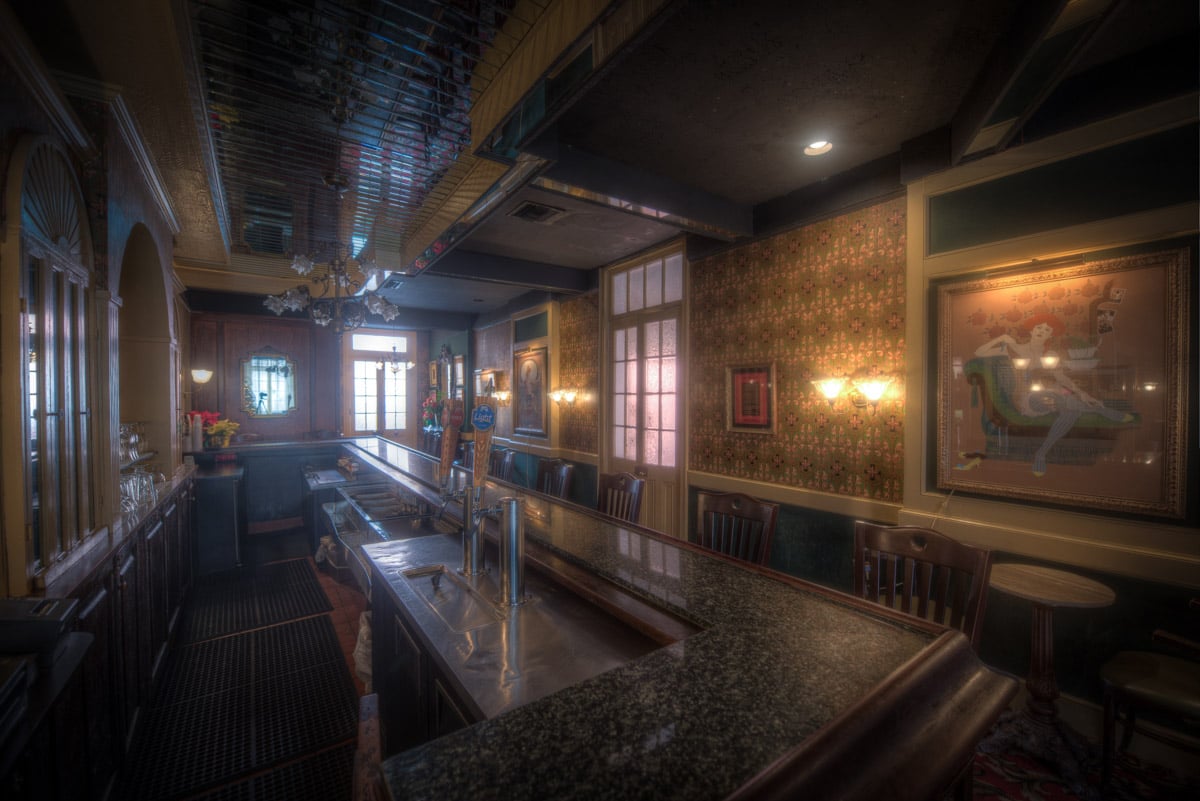
And today, May Bailey’s seems to cater to these same people . . . over a century after the sporting house was established. Guests have walked in to the bar for a cocktail, only to see brochures and books in the bar’s mini-library fly off the racks and shelves. Employees talk of the front door slamming shut, and even one of the bar stools levitating off of the ground! There are also rumors of a ghostly soldier still walking the exterior courtyard, pacing back and forth, back and forth. Was he perhaps a man of high rank during the Civil War? Is he still waiting for someone who might never come to meet him in the afterlife?
A female spirit has also been spotted on the upper floor. Always she is dressed in a white gown, leaving some to suspect if this specter might be the ghost of May Bailey’s younger sister, who adamantly despised having to live in a brothel. A romantic at heart, she imagined castles and loving marriages. When she met a soldier and fell deeply in love, she could not wait to marry the man. Only, her beloved never returned from war, it’s said, leaving her to wait in heartbreak as she realized that her dream of escaping the brothel would never come to fruition.
With old photos of May Bailey’s “girls” hung up on the walls, it’s easy to see that May Bailey’s Place might now cater to a more respectable clientele with a fondness for the scandalous past. . . but that it’s ghosts have not yet forgotten what this building once was, nor are they willing to let go even in death.
In today’s day and age, the White Elephant no longer exists—instead, the property directly across the street from May Bailey’s Place now goes by the Hermann House and belongs to the Dauphine Orleans Hotel.
(This makes sense knowing that the area which Dauphine Orleans sits once was the center of vice in the nineteenth century).
But while May Bailey’s was a classy establishment, where gents were likely to pay anywhere between ten to fifty dollars to spend the night with one of the girls . . . well, the women at the White Elephant were certainly not of the same caliber. It was a rough-and-tumble place, with prostitutes generally standing in the doorway in order to coerce men to come in and join. And, while women across the street probably only worked for May Bailey, the ladies at the White Elephant owed their loyalty to no one.
No one but themselves.
Perhaps the most famous crook (and prostitute) was none other than Eliza Riddle, a woman of mixed descent who was as violent as she was cunning. On three separate occasions, Eliza was reported in the Times-Picayune as beating another woman up. Two instances were against the same woman, Virginia Reed, who had the bad luck to be conked over the head with a glass bottle each time. Another victim of Eliza’s fury was a prostitute living on Burgundy Street. Apparently she’d said something so heinous that Eliza grabbed a lamp from the woman’s side table and proceeded to put it to good use.
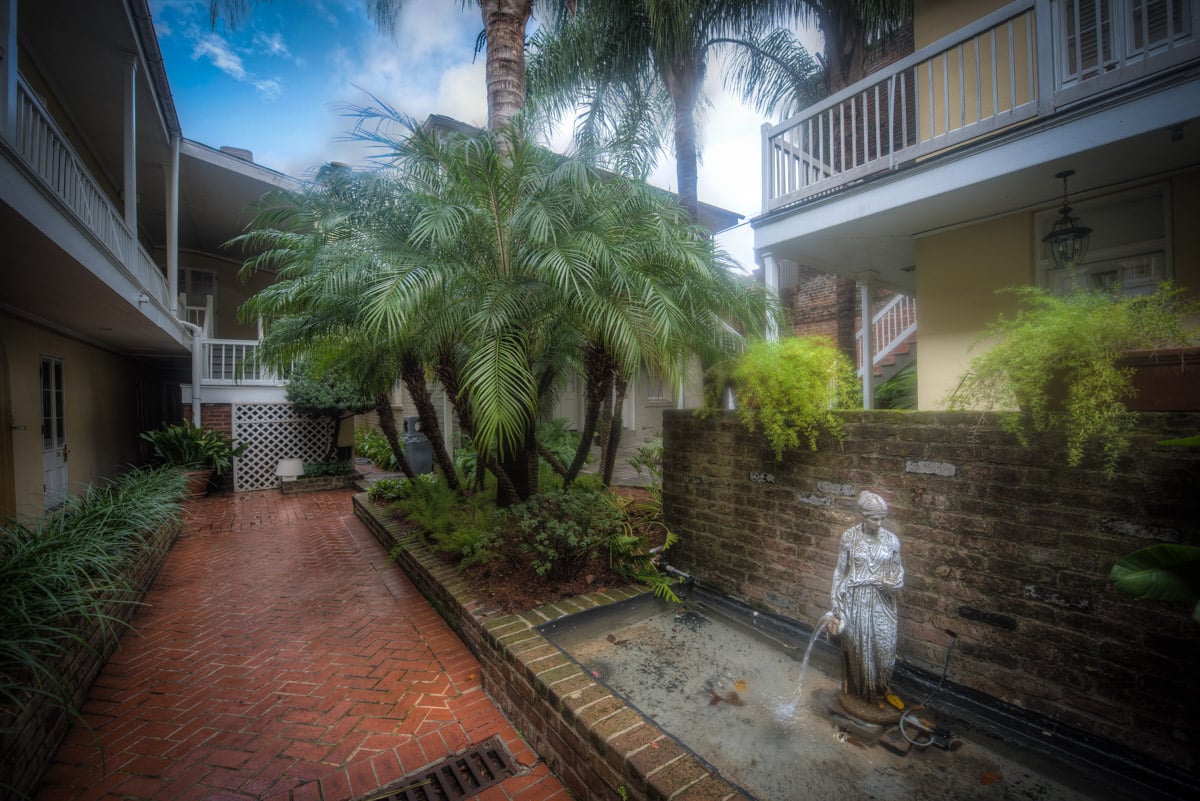
Eliza’s crime-spree didn’t stop there. She was arrested twenty-four times in the span of sixteen years—considering she spent ten years in prison for stealing $500 (or more, according to certain sources) from a man who paid her a visit, twenty-four arrests in six years is a bit excessive. So excessive, actually, that journalists for the Times-Picayune had an ongoing bet about when Eliza would next end up in prison for antics including swindling Johns, random acts of violence and attempted escape from jail.
It’s no wonder that the Hermann House of the Dauphine Orleans Hotel is quite haunted. Guests of this section of the hotel have heard the sounds of music wafting in the air, experienced sudden cold spots when even the AC is turned down low. There have been reports of guest room lights flicking off and the sounds of feet padding over the soft carpet.
Is this paranormal phenomena the result of the White Elephant and the women who once worked there? It’s tough to say without holding a proper investigation, but one thing is for certain: the Dauphine Orleans Hotel routinely is rated as one of the most haunted hotels in the city, so you know you’re bound to run into some spirits while staying here.
Mississippi-born Norma Wallace moved to New Orleans with her mother and brother around the turn of the twentieth century. By the age of twelve, Norma knew exactly what she wanted to be when she grew up: a brothel owner.
She once exclaimed that she would rather be a Madam, in which she had complete autonomy, than be a prostitute and directly reliant upon a man. And Norma never was relent upon any man. With her career goals in sight, she traveled to New York City and Chicago to study under some of the most famous madams during the early 1910s.
When she returned to New Orleans, she opened her own brothel at 1026 Conti and saw nearly immediate success. She opened around 1917 when the rest of the Red Light District was being shut down. But Norma was never caught. When rumors touched her that a police raid was on the horizon, she had her girls haul a ladder between her building and the bar next door. The women and the men all scampered over the rungs into the neighboring saloon.
No one was ever the wiser, and Norma’s parlor house continued to thrive. It did so when her mafioso lover—angry that she had decided to part ways with him—shot her in front of the brothel itself. Their affair then ended, naturally, and he was the closest man in Norma’s life to ever distract her from her lofty ambitions.
Unfortunately, Norma nearly lost all of her money when the banks collapsed in the 1930s—following that interlude, she realized she could never trust the banks and proceeded to stash her money in secret drawers in the brothel itself. It was not until the 1960s that Norma’s brothel-owning days came crashing to an end. She ended up in jail for a bit in 1963, and not long after she decided to convert the parlor house into an Italian restaurant.
Norma’s establishment was the last openly run brothel in the city—but unfortunately Norma did not see the fruits of all the glory. One night while she was staying her country home, her best friend called with troubling news: Norma’s much-younger husband was having an affair. So infuriated, Norma grabbed a pistol and shot herself in the head.
She died immediately—and it’s said that 1026 Conti Street is still haunted. With seven apartments today (just like it had been seven rooms during its brothel days), people can still smell the scent of her cigarette smoke wafting in the air. Whether fantastical or not, there have been paranormal reports of people hearing the tinkling of cocktail glasses and the sound of husky laughter and gentle music.
Has the spirit of Norma Wallace never left the property that was her pride and joy? Be sure to swing past this nineteenth century building and snap a few photos of the exterior—you never know what apparitions might pop up.
On the other side of the French Quarter, close to what was once the rowdy Gallatin Street, sits the Mississippi River Bar. Locals call it the "MRB" for short. From the exterior, the MRB is a rather unassuming building. The interior offers shadowed alcoves and great food for those who are hungry.
But back in the nineteenth century, this strip of St. Philip Street was not the sort of place you wanted to visit if you had the opportunity to avoid it. In 1852, for example, a "ferocious" barber named Louis Verling was arrested for assault. He worked just across the street from the current-MRB and apparently struck a Recorder (journalist) of the city "in the left eye with a colt [ . . . ] thereby endangering his life and considerably marring his beauty."
Obviously the rather ferocious Mr. Verling was the sort of man who resorted to violence at the drop of the hat.
But that was not all, because in the same dated newspaper, a "disorderly house" just a step or two away from Mr. Verling and the current-MRB was brought to light by the same Recorder who had taken the butt of a pistol to the eye. This time around, the neighbors had riled together to charge Christian Teigman guilty for operating a brothel. Oh, and also for perhaps attempting to drag the Recorder from his room with "the intention of killing him."
No worries, it seems that Teigman, like Mr. Ferocious, was locked up in jail accordingly.
But with such drama and vice occurring all around the now-MRB, it won’t come as much of a surprise to learn that the location was also a brothel. And as a working brothel, there were many girls desperate enough to seek employment within its walls. One such woman was an Irish immigrant who arrived in New Orleans with great hope. Only, after realizing that she had no resources to make it, she fell upon the oldest career in the books: prostitution.
Luck was on her side, however, because she had the good fortune to meet a man who claimed her heart. Love was in the air! And finally she saw the out she needed to step away from prostitution. But then her beloved went off to war and when he returned, he did so in a pine box. Heart wrenching, the woman went to the brothel's courtyard and hanged herself.
According to employees and patrons of the MRB, it seems that her spirit has never left. Almost all of the paranormal activity at this bar is relegated to the woman's bathroom where the lights shut off at random and the sensation of someone watching you doesn't quite dissipate. But the ghostly Lady of the Night makes her spectral presence known another way. On a few different occasions, women using the restroom have turned on the sink faucet to rinse their hands. They glance up into the mirror, only to see an apparition manifest just behind them. Before they even have the chance to blink, their heads are smashed into the mirror.
On at least one occasion, management at the MRB has had to replace the mirror in the ladies' bathroom thanks to this crazy paranormal phenomena.
It doesn't seem that the afterlife has done anything to temper the female spirit's angry disposition—so we've got to recommend that only the brave seek her out. Then again, it's said that if she takes a liking to you she will often grant you a wish.
Is it worth the possible head smashing and glass breaking if her spirit dislikes you on sight? Only you can answer that particular question.
Author James Caskey, and friend to Ghost City Tours, once commented that Ursuline Street’s Hotel Villa Convento is certainly the most haunted hotel in New Orleans. Is he correct? We tend to think so.
Although the land once belonged to the Ursuline nuns, by the 1830s the plot of land for the Hotel had been sold off to a local New Orleanian family. It passed through a series of owners, most of whom who didn’t own the property for long before selling it once again. It was during the late nineteenth century when it was thought to have been converted into a brothel, perhaps inspiring the song House of the Rising Sun.
It became a boarding house during the early twentieth century, before at long last coming into ownership by a New Orleanian family with descendants tracing back to the Canary Islands or the Islenos.
Although the Hotel Villa Convento is now one of the most reputable hotels in the city, its haunted present is often a deciding lure that brings guests to its front doors. The madam who operated the brothel is reportedly the one haunting the property, and from witness accounts it seems that she’s quite keen on making sure everything proceeds according to plan.

Almost of all of the paranormal activity at this hotel is experienced by men. On one particular occurrence, a couple was checking in at the front desk when the husband stepped outside to have a smoke on the front steps. It was early morning and no one was about, but seemingly out of the blue the husband heard his name carry on the breeze. He twisted around, expecting to see his wife approaching him. She wasn’t there.
Stamping out the cigarette, he returned to the front desk to ask his wife if she’d called his name. With a small shake of her head, she told him that she hadn’t. Despite the slightly uneasy feeling settling in his belly, the husband brushed the occurrence aside. The couple put their suitcases up and headed out to explore the French Quarter. When they returned that night, the wife climbed into bed and the husband went to use the restroom.
This time, the female’s voice came again, closer, louder, as though she was standing just to the side of him and whispering in his ear. The husband shrieked, panicking. He woke his wife and described what he’d experienced. Although his wife promptly told him that he was probably losing it, she agreed to help him check the room.
Naturally, they found nothing at all and the husband was left to wonder who or what had been trying to capture his attention.
Others staying at the Hotel Villa Convento have heard ghostly laughter; some have even felt the bed dip as though someone has settled in beside them for the night. But perhaps the most common occurrence are when male guests wake up—or are in the midst of doing extracurricular activities with their significant others—only to see a female apparitions shrouded in black staring down at him.
It seems that the ghostly madam at the Hotel Villa Convento isn’t quite ready to let go of the reins of control. As a little precaution, men who are planning to stay at this haunted hotel, prepare yourselves for a spectral visitor who is only hoping to help you out.
Today, it seems like every building that was once a brothel is haunted. We visit a few of them on our New Orleans Ghost Tours. The Hotel Villa Convento, pictured above, is just one of them.
On the Killers and Thrillers Tour, we take you to some of the haunted locations we have mentioned above. On our Bad Bitches Ghost Tour, you’ll hear the true stories of New Orleans’ prostitution business and the violence which often accompanied it. Once you hear the stories of which took place in these houses it’ll be easy for you to believe the numerous ghost stories which abound in these locations.
While you might think men are the more deadly foe, you haven’t met the women of New Orleans yet . . .
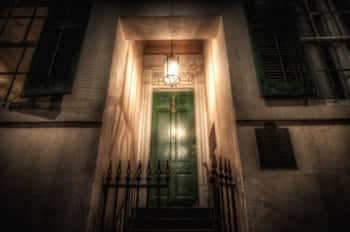
Was this the site of a grizzly mass murder?

New Orleans' most haunted Cemetery
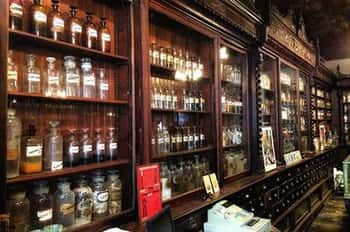
Who haunts this museum, and why?